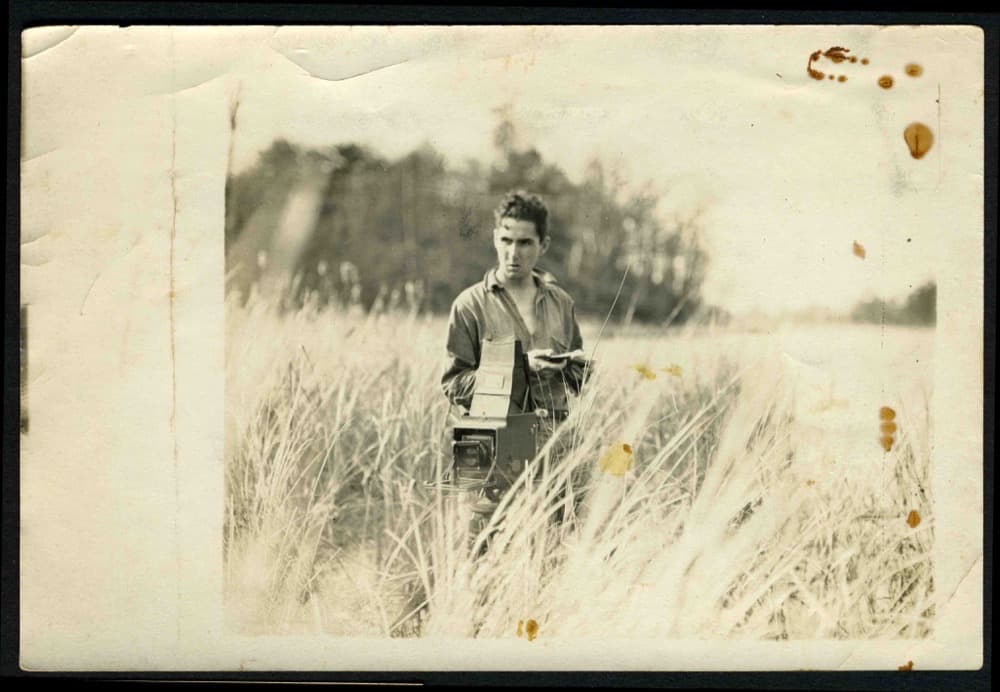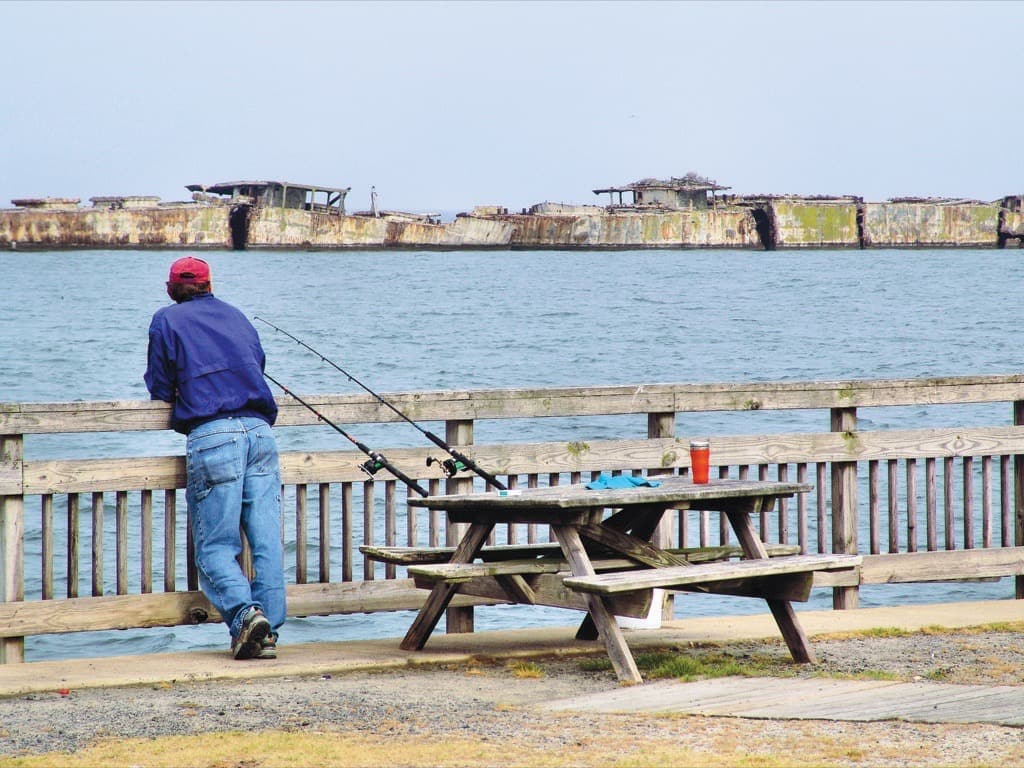Looking back at the pioneering Chesapeake naturalist
In 1951, several nature writers were captivating readers with books that would endure for generations. Rachel Carson opened our eyes to the oceans’ wonders. Thor Heyerdahl thrilled us with his tale of South Seas bravery aboard a log raft. And Gilbert Klingel, a lesser known but no less knowledgeable author, took us where no one else had gone before and lived to tell of it: to the bottom of Chesapeake Bay.
Unlike Carson’s The Sea Around Us and Heyerdahl’s Kon-Tiki, Klingel’s seminal book, The Bay, never cracked the nation’s list of nonfiction bestsellers when it first appeared. Seven decades later, however, it remains in print, testimony to Klingel as a pioneering (if underappreciated) naturalist and intrepid explorer of his home waters.
Marrying Carson’s scientific rigor and lyrical prose with Heyerdahl’s thirst for adventure, Klingel probed the Chesapeake from above and below. The Bay earned him the prestigious John Burroughs Medal for nature writing in 1953. In reviewing it for The New York Times, Carson praised the “rich imagery and evocative quality” of his writing, grounded, she wrote, in “the endless patience of a true naturalist.”
Klingel’s accolades were fleeting compared with his writing contemporaries, but his legacy endures—all the more remarkable because this self-described “amateur biologist” never took a post-secondary science course. Or any college instruction. His classroom education ended with high school. Self-taught, he learned about fauna and flora in books and in situ, examining up close Chesapeake waters, beaches, marshes, and islands for most of his 74 years.
On the 70th anniversary of The Bay’s debut, Klingel’s family and admirers are rekindling interest in this insatiably inquisitive naturalist, explorer, boatbuilder, inventor, author, and photographer who died in 1983. An award-winning 2018 documentary, The Legacy of Gilbert Klingel: Man of Steel by Virginia filmmaker Dave Miller, aired regionally on public television. One of Klingel’s signature steel boats is partially restored and another awaits restoration in Mathews County, Va. Klingel’s daughter, who is president of the Mathews Maritime Foundation and the documentary’s scriptwriter, envisions an extensive exhibit about her father when the foundation finds suitable museum space on or near Gwynn’s Island, Klingel’s favorite place on the Bay and his last home.
Meanwhile, readers can discover much about Klingel’s keen mind, expansive imagination, and exceptional life in The Bay’s 278 pages.
Born in Baltimore into an affluent family of pharmaceutical entrepreneurs, Gilbert Clarence Klingel wasn’t destined for either the family trade or for city life. His course was set when he traveled by steamboat with his parents on a vacation to Virginia’s Middle Peninsula. “I discovered Gwynn’s Island here in this great bay-fronting county of Mathews in 1912,” he told the Baltimore Sun in 1964. “I returned as often as I could.”
Staying in Hudgins’ Boardinghouse, the family spent summer getaways enjoying the Bay and Milford Haven, waterways where Gilbert learned to swim and sail and soak in his new surroundings.
“He became acquainted with nature for the first time in his life,” says his daughter, Marcy Benouameur, a Mathews resident. “He fell in love with the area and with the Chesapeake Bay. It was a turning point in his life. Here was a completely different world to him. He was enchanted with it.”
Even the scary parts. One hot August afternoon, he recounts in The Bay, he went swimming, only to be surrounded by dozens of clustered jellyfish when he tried to return. With medusae looming everywhere, he swam doggedly through their tentacles, enduring searing stings on his chest, stomach, back, limbs, and face until—exhausted and half drowned—he finally reached shore.
His youthful near-death encounter initially dampened his interest in Dactylometra, the Chesapeake’s dreaded stinging species of jellies. Later, as he came to view them through a naturalist’s eyes, he found Dactylometra “a graceful and even beautiful creature.” He mentions jellyfish frequently in his book, holding them in awe and respect.
In Baltimore, Klingel joined the Maryland Academy of Sciences at age 10 and became cofounder and a curator of the academy’s offshoot, the Natural History Society of Maryland. Growing up in the city’s Guilford neighborhood, he availed himself of its institutions of culture and learning: the library at Johns Hopkins University, the Baltimore Museum of Art, and the Baltimore (now Maryland) Zoo, where he liked to photograph the animals.
In his teens, he set up a makeshift biological lab beside the Magothy River to study its plants and animals. His mentor was naturalist Edmund “Doc” Fladung, founder and longtime president of the Natural History Society. An admirer of Charles Darwin, Klingel dreamed of sailing overseas to study native species.
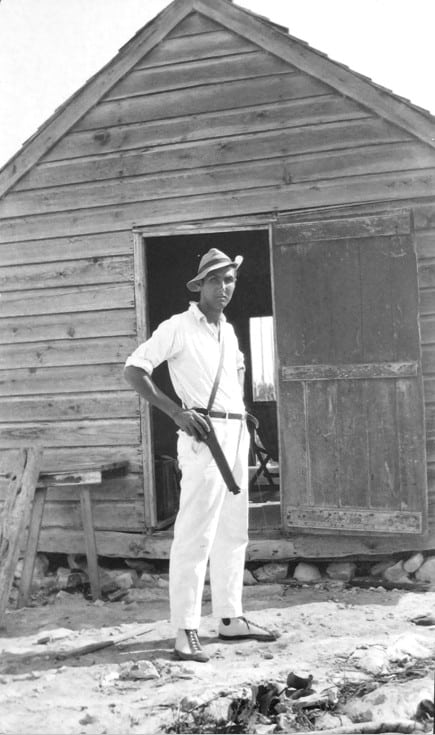
In his 20s, he did just that, traveling to Haiti and then the Bahamas to study, photograph, and collect lizards and other specimens for museum collections. In 1930, he had a 37-foot yawl, the Basilisk, built in Oxford, Md., intended for an 18-month expedition to the Caribbean with a colleague. The boat’s construction and outfitting were financed by New York’s American Museum of Natural History, Maryland’s Natural History Society, and by Klingel’s paternal grandmother, a prominent Baltimore businesswoman. Weeks into the voyage, however, the Basilisk wrecked on a remote Bahamian island, where Klingel, only 22, remained for six months, living in a hut while continuing his research. He later recorded his adventures in his first book, Inagua, published in 1940.
For the rest of his life, Klingel would turn his wanderlust and jeweler’s eye exclusively on “one of the most remarkable bodies of water in the world,” Chesapeake Bay.
Having returned to Maryland and married, Klingel continued exploring the Bay, writing for newspapers and nature journals. In 1933, he constructed a rudimentary diving helmet that introduced him to an entirely different Bay, “one of strangeness and unreality.” The helmet—a bronze box weighted with 80 pounds of lead that encased his head and neck like towering shoulder pads—provided him an underwater portal. In this murky world, fleeting creatures slithered over his skin, strange fish peered at him with glowing green eyes, and he became illuminated “by the glow of millions of minute animals excited by my presence.”
But the helmet had drawbacks: Water pressure limited his dives to 30 minutes, he often needed his fingers and toes to hold fast to the seabed, and he was defenseless against jellyfish. Working at the Chesapeake Biological Laboratory in Solomons, Klingel improvised a diving bell in 1935, one of two he invented for under-Bay expeditions. (He was close on the heels of William Beebe, who made deep-sea diving history in 1930 in the newly invented Bathysphere.) For less than $400, Klingel and his assistants constructed the Bentharium (as he called it) from a salvaged chemical drum and spare parts. Made of quarter-inch steel and deployed from a barge, it could operate down to 300 feet. Sandbags provided ballast and the chamber’s two occupants breathed fresh air pumped through garden hoses.
Christened with a bottle of Coca-Cola and towed into the Patuxent River for its maiden dive, the Bentharium drew the silent scrutiny of Solomons Islanders, of whom Klingel wrote, “a goodly number were quite certain that before long there would be a first-class drowning.” Aside from initial alarm about the sound of gushing water (actually caused by the propellors of a passing ferry) and severe turbulence churned by a southeaster, the Bentharium’s first voyages proved safe and successful.
In newspaper articles and in his later book, Klingel opened readers’ eyes to the “animate sandwich” that is life beneath the Chesapeake: graceful butterfish, diaphanous jellies, manically dancing marine worms, crimson sponges, and ravenous blue crabs. His first piece for the Baltimore Sun appeared in 1934 and he went on to write about anything and everything for the paper: snakes, coastal erosion, flamingos, sea squirts, eels, coral reef diving, the evolution of Sinepuxent Bay.
“Once, they asked him to write an article about spinach, thinking he couldn’t do it,” his daughter says. Klingel’s “A Century of Spinach,” about a Baltimore vegetable cannery, appeared in the Sun in 1936.
Meager writing stipends and the Great Depression’s toll on his research funds forced Klingel to find other work. In 1941, with his family living in suburban Baltimore, he took a job with Armco Steel in the city.
“He started at the very bottom as a welder and then worked his way up to the head of the metallurgy department,” says Benouameur. In 1948, in his home workshop, he built his first steel-hulled sailboat, a 30-foot sloop named Thespina. With its construction, Klingel pioneered metal boatbuilding in the Chesapeake. (25 years later, he wrote the definitive text on the subject, Boatbuilding with Steel.)
Klingel’s national prominence came several years later with publication of The Bay and the opportunity of a lifetime it generated.
For decades, Klingel had observed the Chesapeake with childlike wonder and a heron’s fierce patience. In the fall of 1951, publisher Dodd, Mead and Company released The Bay, a collection of his revised, previously published nature essays. In the preface, Klingel explained that his was not a book of Bay history, biology, or seafaring adventure. Instead, he wanted to depict the Bay’s natural essence, “the sleek still calms, the gray fogs, the sparkling lusty northwesters, the goodly smell of the swamps, and the clean feel of the salt air.”
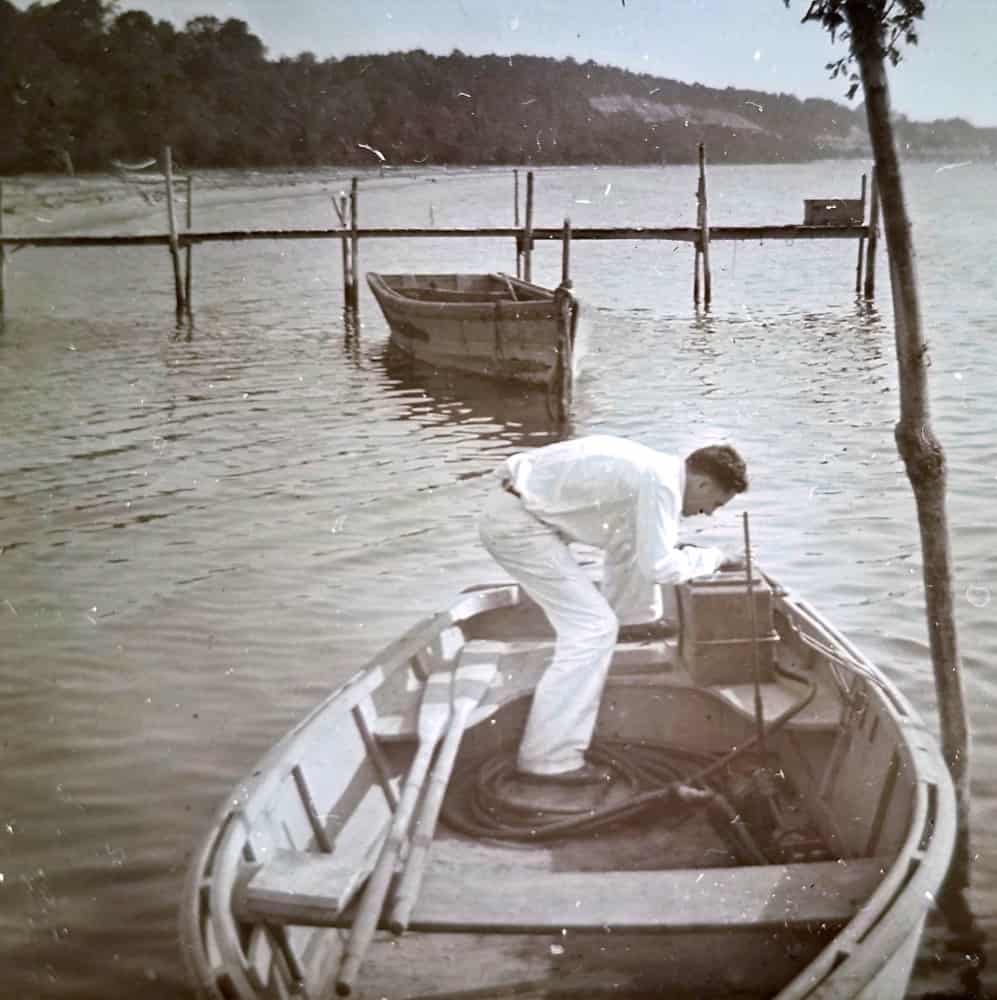
His writing is part naturalist’s, part philosopher’s, and part poet’s, with a dash of dry wit. Having absentmindedly lost his bearings once in the fog, he perceives the origins of life in a water droplet. He sees finality on a desolate beach where the tide line “is strewn with the wreckage of a multitude of lives.” As adventurous a consumer of nature as an explorer, he likens teredos (shipworms) to the taste of oysters: “If you doubt my word, try one some time.”
He stared nature in the eye. He braved a midsummer squall where “the sky is filled with tortured liquid and screaming air.” He devotes an entire chapter to the 24 consecutive hours he spent observing life in a Patuxent River saltmarsh.
But it was Klingel’s underwater exploits that captured the world’s attention. In 1952, the National Geographic Society asked him to design a diving chamber for a photographic expedition beneath the Chesapeake. Assisted by his boatbuilding partner, James (Bill) Nahm, he constructed the Aquascope, a more sophisticated version of his previous submersible, equipped with spotlights for nighttime photography. In the summer of 1953, Klingel and magazine photographer Willard Culver descended about 35 feet below Milford Haven to capture the first color images of Chesapeake marine life. “One Hundred Hours Beneath the Chesapeake,” written by Klingel with Culver’s history-making photos, appeared in National Geographic Magazine’s May 1955 issue.
Benouameur, then a teenager, recalls her descent in her father’s “misshapen yellow steel lobster” (his description) off Gwynn’s Island. “They’d clamp down the cockpit and you’d lay on your stomach on a foam mattress. You could see perfectly well right outside,” she says. “The highlight of my trip was seeing two eels get into a fight right in front of the window.”
She says her father liked the spot he’d carefully chosen for the Aquascope’s dives so much, he relocated his weekend boatbuilding business to Gwynn’s Island. After retiring from Armco in 1963, he made his home there too, building steel boats and writing until lymphoma took his life two decades later.
“Contemporary man is cheating himself of future oyster dinners by his very efficiency in collecting them; he cannot take and not give; success in one day means failure in another.”
—Chapter 17, “Compensation”
One of Klingel’s final writing projects was a companion book to The Bay, an unpublished work devoted to the Potomac River. Titled simply “The River,” it’s a naturalist’s exploration of the Bay’s second largest tributary from its burbling birth on a West Virginia mountainside to its broad, bistate dispersal into the Chesapeake. “He wrote it because he wanted it to be known what the Potomac was like during his lifetime,” Benouameur says. “He knew it wasn’t going to stay the same.”
Urban sprawl, mechanization, pesticide use, water pollution, overfishing, boaters’ preference for power over sail—all dismayed Klingel in later years. For a 1967 re-issue of The Bay, he wrote a more pessimistic introduction, declaring, “In comparison with what it once was, the Chesapeake is in the process of becoming a relative biological desert.” Addressing a Mathews’ League of Women Voters meeting, he warned, “Man always suffers when he upsets the balance of nature, and he is upsetting it badly.”
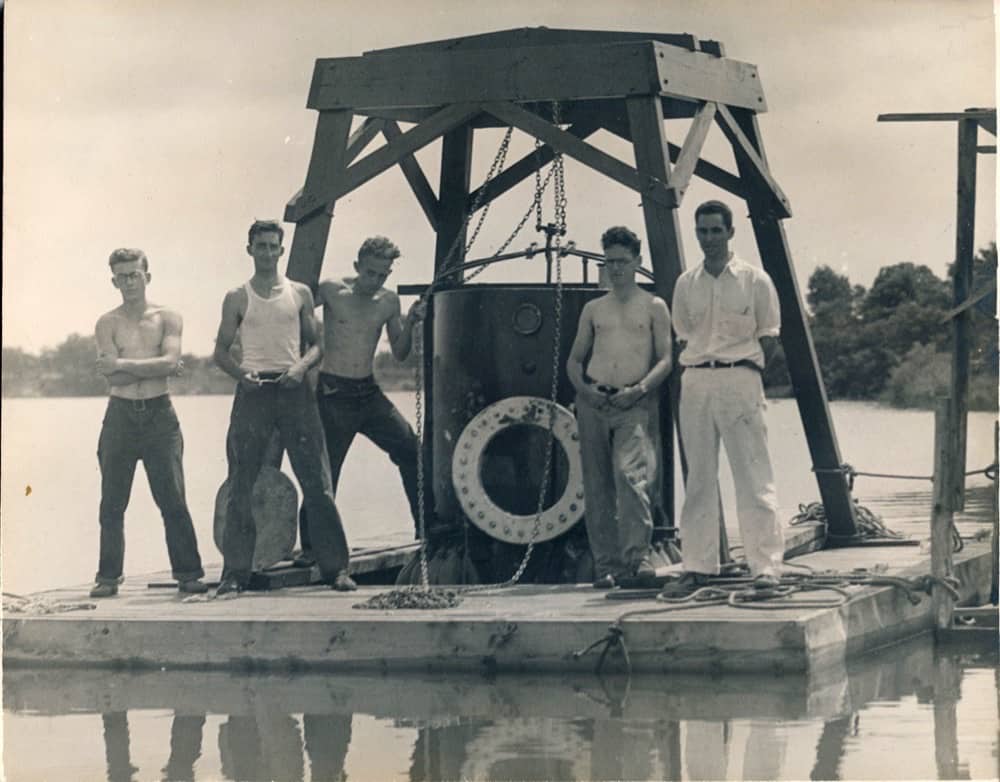
Klingel’s underwater exploits may remain unmatched. “With the direction in which water quality—and clarity—has gone . . . it may not be possible to see again what he did,” environmental writer and fellow Burroughs Medal-winner Tom Horton wrote in 1986.
In The Bay, Klingel challenges readers to perceive the Chesapeake differently: listening for “the sibilant swishing of beach grass,” imagining a baby tern emerging “from an oval still cell where nothing changed or moved, to a blinding world of brilliant light,” and observing creatures from their elevation rather than ours. He prostrated all six feet, two inches of himself on the sand to watch fiddler crabs at claw height (“highly unscientific, wholly undignified, yet entertaining,” he concluded).
“Who besides my father would ever have thought to lie prone on the sand to have his eyes an inch or so above sea level to see the viewpoint of fiddler crabs?” Benouameur says. He was her childhood mentor, the one with whom she caught tadpoles in their backyard creek and who first showed her the stunning phosphorescent microorganisms that lit the water when he rowed their dinghy.
“He gave me the spirit of adventure that he had,” she says (as well as a treasured ring he wore on his Inagua expedition). An anthropologist, she traveled extensively, backpacking through Europe and finishing university graduate studies before marrying and settling in North Africa. There, she had more opportunities to travel in such places as the Algerian Sahara desert. After her husband died, she returned stateside and worked at the Smithsonian Institution before retiring to her father’s beloved Mathews County.
With his spirit, she kayaked the waters he explored in the last boat he built, Green Heron, a 30-foot, flat-bottomed motor-sailer that Klingel modeled after Chinese sampans he saw in a movie. “Whenever I’d go out,” she says, “I’d always have to know what’s around the corner and what’s around the next corner.” Green Heron was found some years ago, abandoned in the woods by a subsequent owner. Mathews Maritime Foundation plans to restore it.
The boat was nicknamed “Creek Crawler.” In it, Klingel found refuge from civilization in the hidden, fragile places he loved. “The swamps,” he said, “are consoling in their calm defiance.”
Copies of The Bay and DVDs of The Legacy of Gilbert Klingel: Man of Steel (including Under the Chesapeake by NOAA diving legend Morgan Wells) are available at mathewsmaritime.com.

